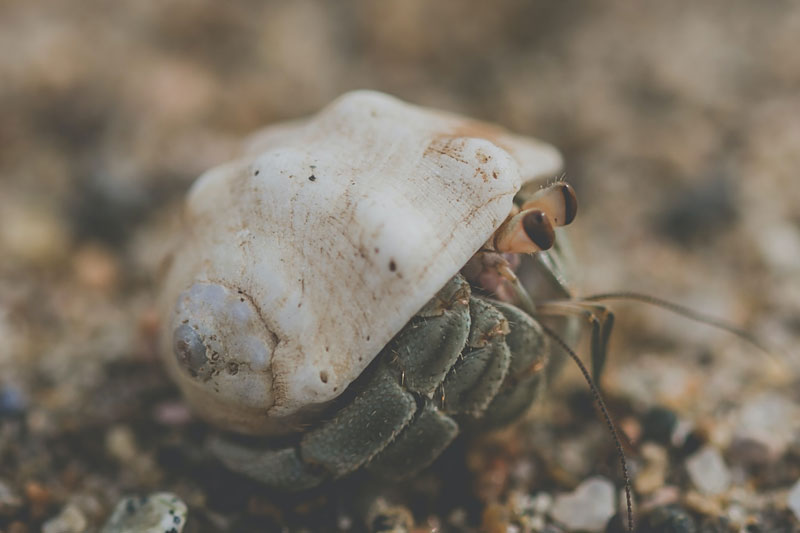Just like humans, hermit crabs feel stress as well especially for captive hermit crabs since they are taken away from their natural habitat and now kept into an unfamiliar one. So you can imagine the struggle in transition.
How To Tell if they are stressed
Your hermit crab will show stress in various ways and its better to spot them as soon they feel it. Here are some of the common signs that your hermit crabs are stressed:
- Limbs are shedding. One missing leg is a warning but for a hermit crab to lose multiple legs is a huge reason for concern.
- Hiding inside its shell or buried under the substrate constantly – be sure to check though if it’s stressed or just molting.
- Not eating and drinking.
- Constantly attempting to escape its tank.
If you noticed this, don’t brush it off as it might be a warning sign that your hermit crab is undergoing a lot of stress. And if you happen to be in this situation, do provide your hermit crab some quality of life improvements on their tank.
Is it possible that my hermit crab will die from stress?
Yes, it is possible, as mentioned above a stressed crab will not eat or drink and it will cause the hermit crab to either die in dehydration or starvation.
Environment is not the only factor to cause stress, bacteria or parasites may also cause this. That’s why it’s important to regularly clean your hermit crab’s tank as they might get life threatening bacteria or parasites from a dirty tank. Also be always on the lookout for the shells that you provide, ensure that you’re able to sterilize it properly and do not use any chemicals to do so as it might be a factor as well.
How can I help my hermit crab then?
The simplest and easy way to do it is to leave it alone. DO NOT, I repeat DO NOT try to pick it up as you will add to the factor causing stress to it.
Newly captive hermit crabs will always burrow on its first few days with you. It may even take weeks.
To avoid further stress with new hermit crabs, don’t put them right away into a big tank and place them instead into a smaller isolation tank so they can relax for a while. Put in limited substrate, food, and water. They won’t probably eat right away so give them time to adjust.
While your hermit crabs adjust, make their main tank feel like their natural habitat by providing what they need just like in the wild. Also ensure that their tank (main and isolation) is meeting the required temperature and humidity.
If you’re taking care of multiple hermit crabs, do monitor them regularly as some of them might bully other hermit crabs. And fighting hermit crabs will always end up someone missing a leg or two. So be on the lookout for it.
